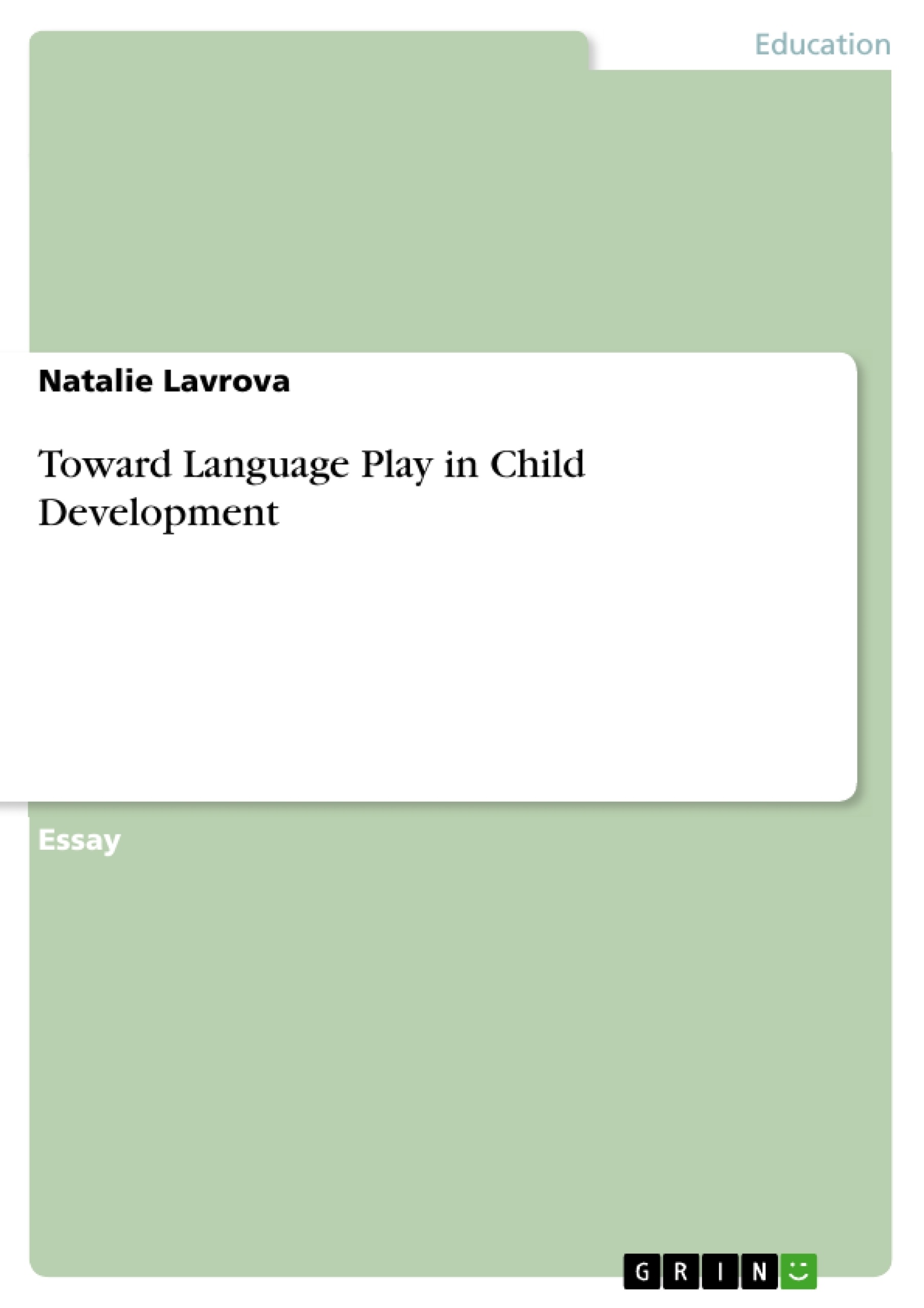The article focuses on some aspects of language play in children and its link to children's intellectual and emotional development. The author strives to demostrate that verbal play is a result of a creativity penchant, which is ultimately conducive to progress and development.
Lavrova N.A.
Toward Language Play in Child Development
Language play takes place when one distorts either the form, the semantics or functions of linguistic units in search of entertainment for oneself or for the recipients. It would not be an exaggeration to say that everyone, regardless of background and educational level, to a certain extent plays with language or responds to language play: “The responses range from the primitive pleasure experienced by severely mentally handicapped children when they hear dramatically contrasting tones of voice… to the cerebral bliss experienced by highly sophisticated connoisseurs as they explore the patterns of sound play in, for example, James Joyce’s Finnegan’s Wake” [Crystal, 1996:328]. One can definitely feel that the second part of the passage by D. Crystal is ironic and probably even sarcastic, for it is hard to enjoy the nonsensical strings of graphemes with which the novel is interspersed. Apparently, the perceptual problem with “Finnegan’s Wake” is not actually that the strings are completely devoid of sense, but that graphemic representation is superfluous in conveying some vague snippet of sense, if, indeed, any. One is also hard put to appreciate the hard-to-perceive, the hard-to-digest wording of the novel, because the plot is not clearly structured, syntactic rules are extensively violated. For some professionals verbal play is part and parcel of almost everyday routine. For journalists, editors and sub-editors the success of what they are going to sell to the public to a great extent depends on how ingenious they are with their captions and headlines. The likelihood that the potential reader will read the whole article increases if the headline is verbally playful, although one should not carry it too far, for it is the tabloids that are prone to sensationalize their articles by inserting all kinds of distortions into the headlines. Copywriters and advertising agencies are another source of copious facetious examples, some of which are deemed as more successful than others.
It is only small wonder that all kinds of play, including verbal, are central to child-development, given the undiminishing popularity of verbal play in adults’ life. K. Chukovsky writes about “the inexhaustible need of every healthy child of every era and of every nation to introduce nonsense into his small but ordered world, with which he has only recently become acquainted. Hardly has the child comprehended with certainty which objects go together and which do not, when he begins to listen happily to verses of absurdity. For some mysterious reason the child is attracted to that topsy-turvy world where legless men run, water burns, horses gallop astride their riders, and cows nibble on peas on top of birch trees’ [Chukovsky, 1963:96]. I. Opie and P. Opie claim that “Rhyme seems to appeal to a child as something funny and remarkable in itself, there need be neither wit nor reason to support it” [Opie and Opie, 1959:17]. One of the specific forms of child-play, which is both verbal and non-verbal in nature, is the so-called solitary behavior accompanied by a soliloquy that is dialogic or, possibly, polilogic in form, though one child performs all the parts: “If there are other children in the room, they tend to ignore such vocalizations, not treating them as communicative” [Crystal, 1996:332]. This solitary behavior may be accompanied by a string of utterances that are usually connected with each other, although the contents of each utterance may not always be common sense. One more type of verbal-non-verbal play found in children starting approximately from the age of 2 and a half, is a “misnomer” period, when they reverse names or misapply nominations: “Once children learn a way of behaving, or are told how to behave, they seem to experience particular delight in doing the opposite, with consequential problems of discipline for the parent” [Crystal, 1996:332].This is manifest at both non-verbal and verbal levels. As early as two and a half years old (and sometimes even earlier) children start deliberate misnaming for fun, mislabeling objects in a picture or saying “good morning” when it is night. Enjoyment that children experience from their verbal play is a direct consequence of deviating from the normal use of language forms or of using normal forms in unexpected contexts. It is hard to say whether these deviations stem from a child developing a sense of humor or experimenting with the causal relationships (for example, a child may apply a misnomer in order to see what happens – what the parents’ reaction will be or whether something is going to happen to the misnamed object).
- Citation du texte
- Natalie Lavrova (Auteur), 2010, Toward Language Play in Child Development, Munich, GRIN Verlag, https://www.grin.com/document/151436
-

-

-

-
Téléchargez vos propres textes! Gagnez de l'argent et un iPhone X. -

-
Téléchargez vos propres textes! Gagnez de l'argent et un iPhone X. -

-
Téléchargez vos propres textes! Gagnez de l'argent et un iPhone X. -

-
Téléchargez vos propres textes! Gagnez de l'argent et un iPhone X. -

-
Téléchargez vos propres textes! Gagnez de l'argent et un iPhone X. -

-
Téléchargez vos propres textes! Gagnez de l'argent et un iPhone X.

